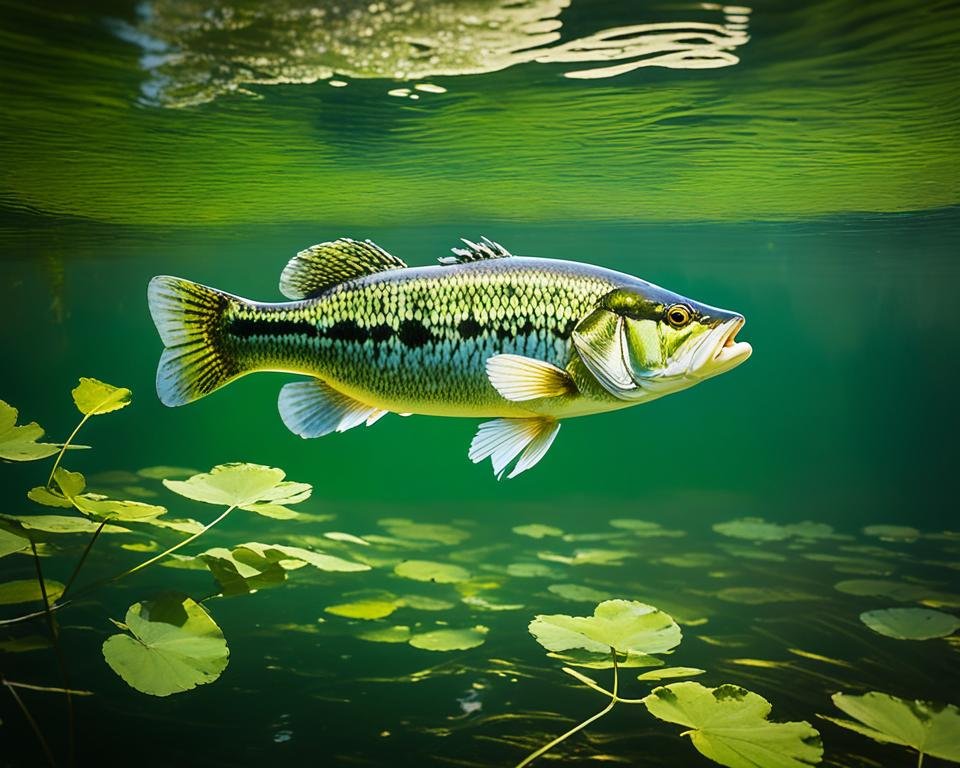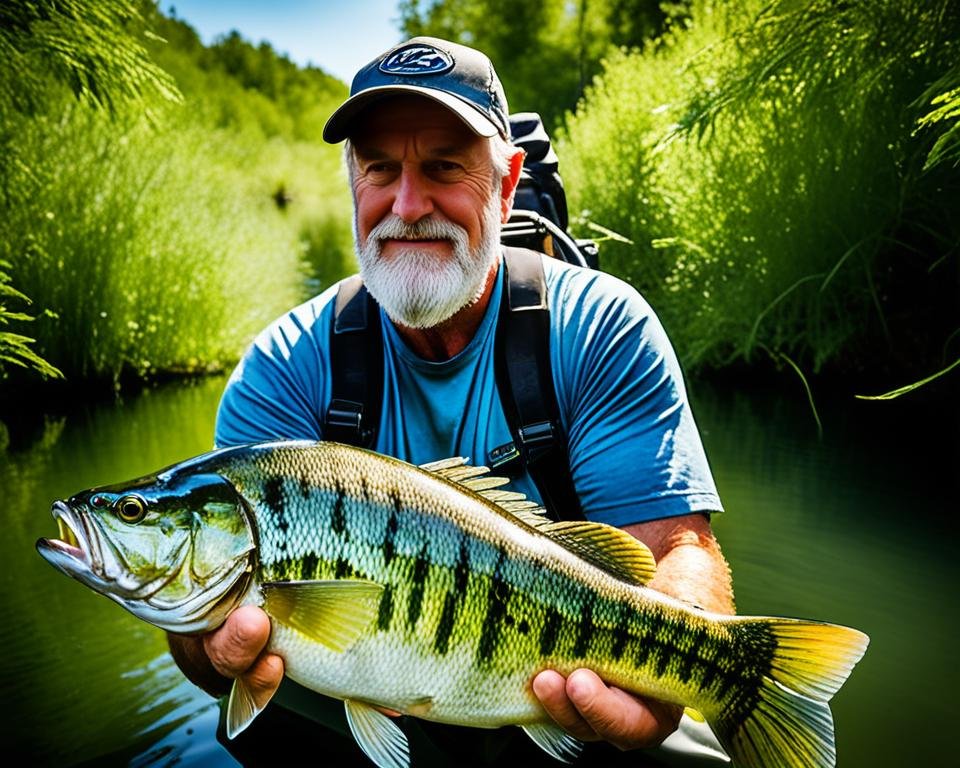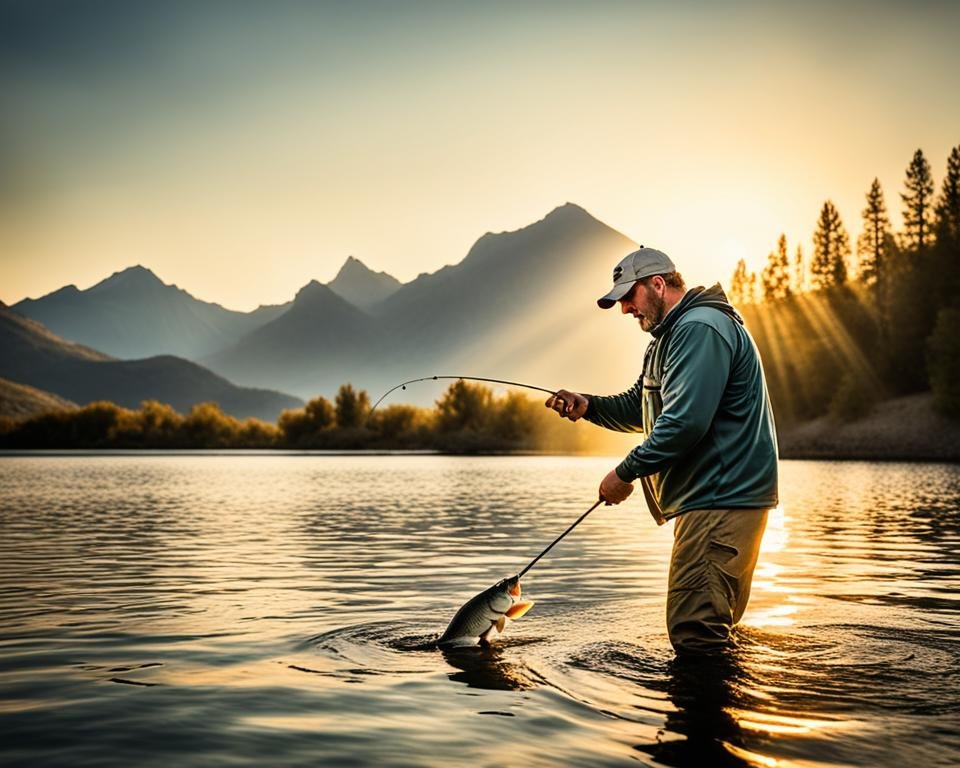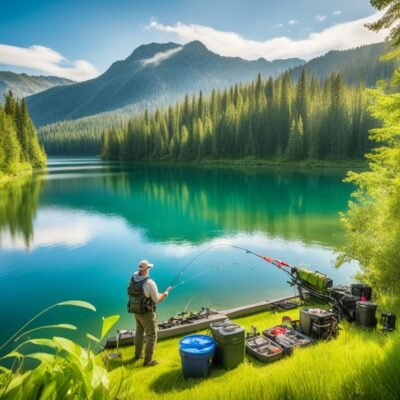Embarking on the quest for the elusive largemouth bass requires not only patience and determination but also a strategic approach embedded with knowledge and finesse. Whether you’re casting lines in the calm, early morning waters or navigating the lily pads at dusk, understanding largemouth bass fishing tips can dramatically up your game. Armed with tested bass fishing tricks, you’re set to tap into the thrill of the chase and catch more bass than ever before.
In this aquatic dance of man versus nature, let’s dive into the breadth of bass fishing techniques that can bolster your catch rate. From the perfect cast to the allure of the right lures, each element coalesces into that exhilarating moment when the bass strikes. Join us as we navigate the waters of successful angling, ensuring your tackle box is stocked not just with gear, but with expert knowledge as well.
Decoding Largemouth Bass Behavior & Habitat
To increase your likelihood of landing a trophy largemouth bass, it’s essential to gain insights into their unique patterns and preferences. A comprehensive understanding of largemouth bass behavior, paired with knowledge about their preferred bass habitats, can make all the difference on the water. Let’s dissect these critical components to elevate your fishing game.

Understanding Bass Feeding Habits
Unlock the secrets to bass feeding habits and you’ll find yourself a step ahead in the angling community. Largemouth bass are opportunistic predators with a diet that changes with age, season, and the ecosystem they inhabit. Whether they’re ambushing prey from the shadowy depths or hunting in the warm shallows, discerning their feeding patterns is paramount for successful fishing strategies.
Identifying Prime Largemouth Bass Habitats
Finding the perfect bass habitats is akin to discovering a treasure trove. Largemouth bass favor areas with ample cover such as submerged structures, weed beds, and drop-offs. These strategic locations offer protection and a vantage point to strike at unsuspecting prey. Recognizing these habitats can significantly improve your catch rate.
Spotting Bass Spawning and Growth Cycles
The bass spawning cycles play a crucial role in their behavior and are a golden opportunity for anglers. Spawning typically occurs in the spring, when water temperatures reach about 60°F. Being aware of the phases of their reproductive cycle – from pre-spawn behavior to post-spawn recovery – allows anglers to anticipate the bass’s movements and capitalize on their increased activity.
Largemouth Bass: Techniques for the Perfect Catch
Perfect bass fishing begins with mastering a variety of bass fishing techniques designed to attract and catch largemouth bass. The nuances in lure selection, presentation, and retrieval can be game-changers. Anglers aiming to optimize their success on the water need to consider the following proven strategies.

Selecting the right lure is paramount to the pursuit of the perfect bass. The vast waters are teeming with opportunities, and each lure serves a unique purpose. Topwater lures, for example, are ideal during early mornings or late evenings when largemouth bass surface to feed. Spinnerbaits and crankbaits, on the other hand, excel around structured areas like submerged trees and drop-offs. Soft plastics rigged weedless are perfect when navigating thick cover or vegetation where bass lurk and ambush prey.
The art of presentation cannot be overstated when aiming to catch largemouth bass. It’s not just what you use, but how you use it. Techniques like the slow retrieval of a jerkbait can mimic the movement of injured baitfish, triggering the predatory instinct of bass. Similarly, flipping and pitching soft lures into tight spots can provoke bass in concealed habitats to strike. It’s these small details in presentation that differentiate a day of casting from a memorable day of catching.
Retrieval methods are the final piece of the puzzle. Adjusting the speed and rhythm of your retrieve to match the mood and activity level of the largemouth bass can lead to more bites. Whether it’s slow-rolling a spinnerbait or working a topwater lure with erratic pops, it’s imperative to be in tune with the environment and willing to adapt. Mindful retrieval, paired with observation and a willingness to switch techniques, lays the foundation for what many anglers consider perfect bass fishing experiences.
By integrating these targeted bass fishing techniques into your strategy, you not only increase your odds of success but also deepen your understanding and enjoyment of the sport. Remember, the perfect catch begins with preparation, finesse, and a persistent pursuit of knowledge.
Conclusion
In our journey to master largemouth bass fishing techniques and uncover the most efficient bass fishing tricks, we’ve traversed through the essential elements that can make or break the angling experience. To consistently catch more bass, a blend of knowledge and skill becomes mandatory. Throughout this article, our aim has been to equip you with the tools needed to understand the elusive largemouth bass and leverage that knowledge to enhance your fishing endeavors.
By diving into the natural behavior and preferred habitat of these bass, we’ve laid a foundation that frames not just why they react the way they do, but also how you can position yourself to take advantage of these behaviors. A strategic approach, informed by insight into their feeding habits and spawning cycles, can transform your time by the water into a series of triumphant captures.
Moreover, applying the fishing tips and tricks discussed, from choosing the ideal lure to perfecting your retrieval method, is imperative for taking your skills to the next level. Whether you’re casting the line at dawn’s first light or as the sun dips below the horizon, the expertise shared here should serve as your compass to navigate the waters and the detailed tactics, your gear to reel in the prized largemouth bass. So, as you prepare for your next excursion, remember that every cast is a new opportunity to apply these principles and elevate your fishing narrative.




